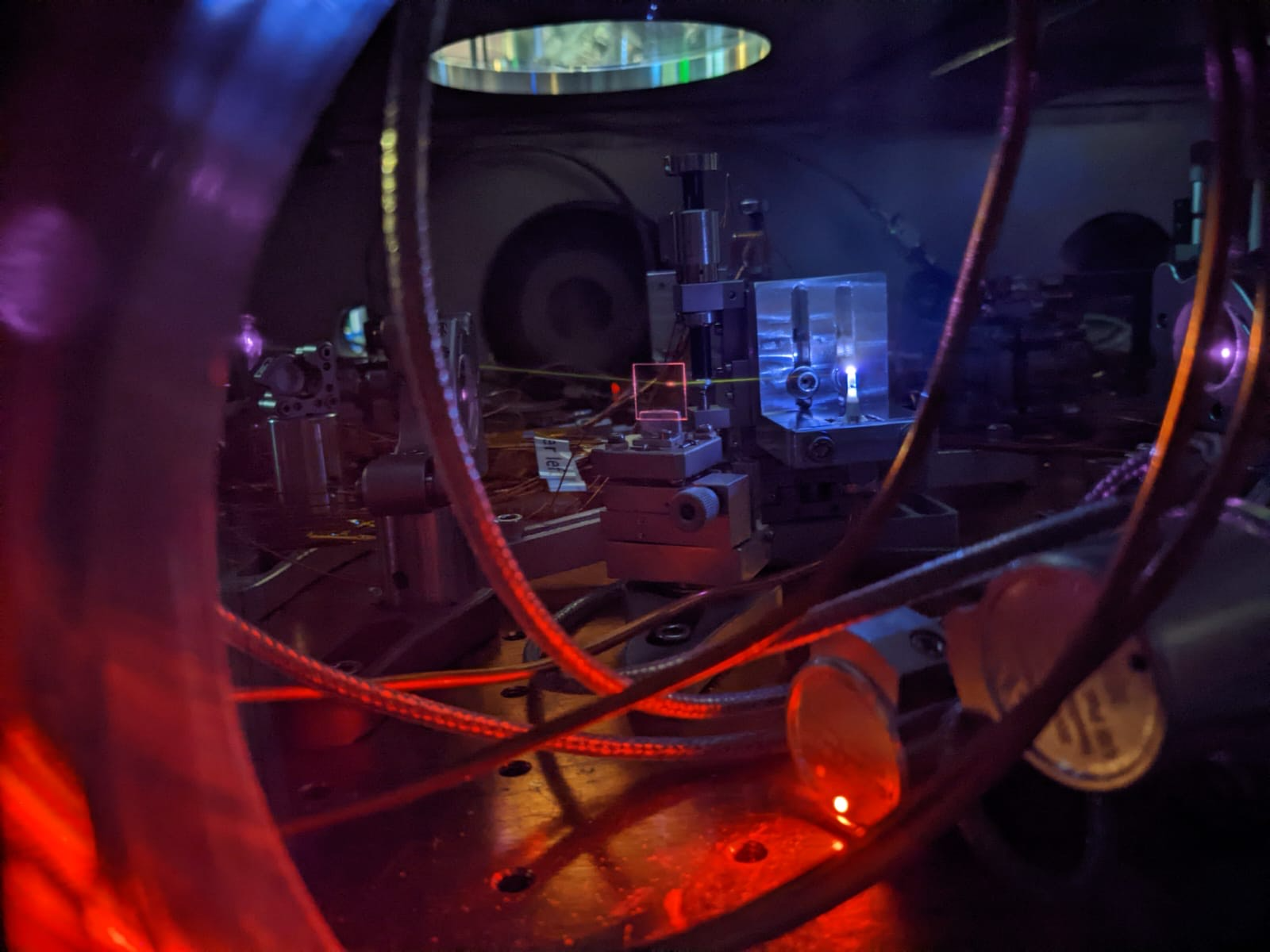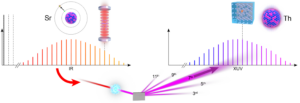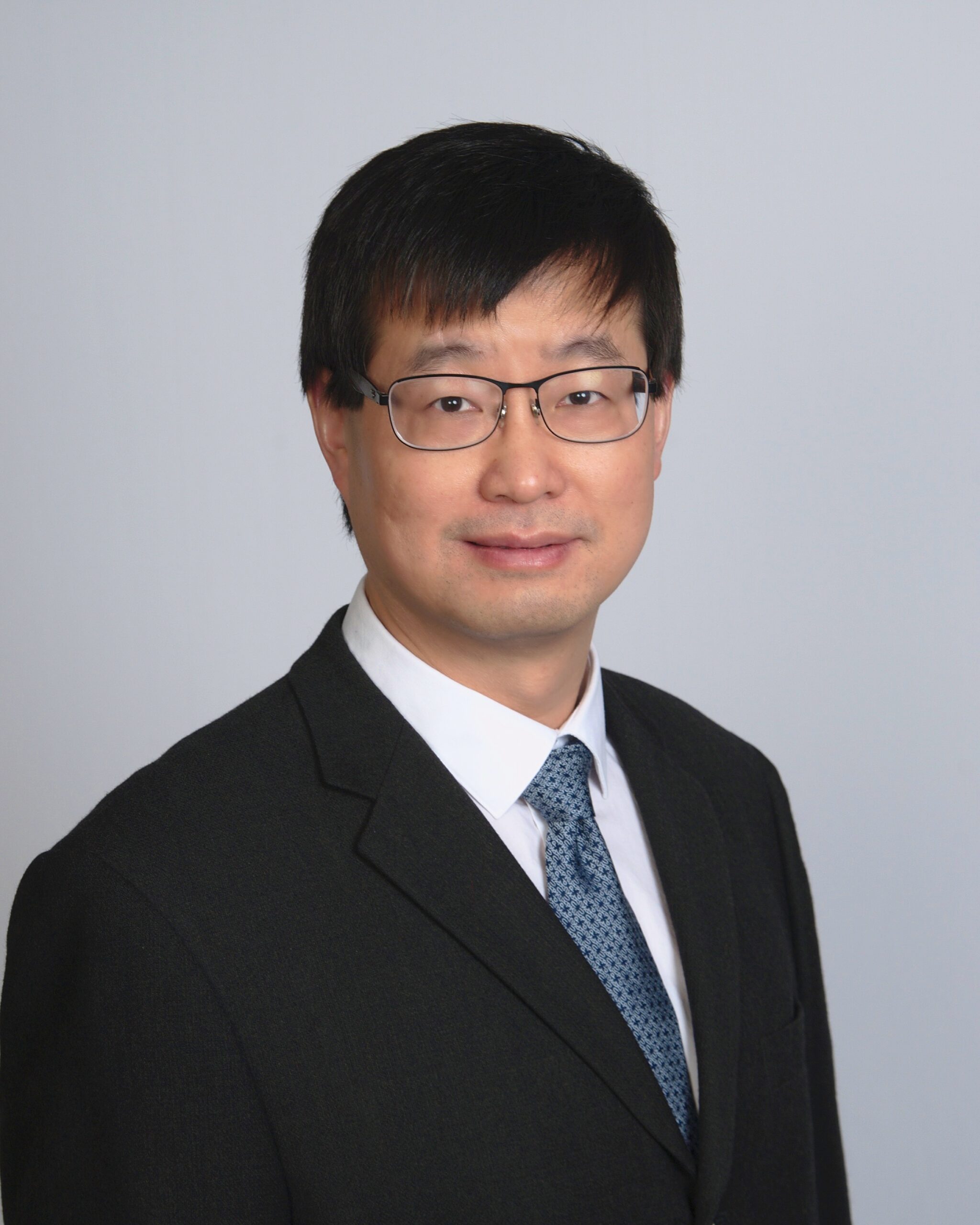The Nuclear Clock: Scaling Quantum Systems for Precision Metrology
Keeping Time with Nuclear Transitions
Jun Ye
Fellow, JILA
Professor, University of Colorado Boulder
Sponsored by PSW Science Member Frederica Darema
About the Lecture

Laser and quantum sciences have fueled revolutionary developments in atomic, molecular, and fundamental physics. Scaling up quantum systems to ever increasing sizes promises to open new discovery opportunities. Quantum technology has brought many thousands of atoms to coherence times of minutes. It is now also knocking on the door of nuclear physics, heralded by the recent breakthrough of quantum-state-resolved laser spectroscopy of the thorium-229 nuclear transition. Using a precision frequency comb in the vacuum-ultraviolet, it has been possible to coherently excite the thorium nuclear clock transition and connect its frequency directly to today’s most precise atomic clock. This unification of precision metrology and nuclear physics is sparking new ideas for testing fundamental physics and promises nuclear-based clocks with billions of nuclear absorbers and time keeping capabilities that exceed today’s best atomic clocks.
Selected Reading
More information and publications are available here: https://jila.colorado.edu/yelabs
See also on the page of Scientific Publications, our latest Nature paper (https://www.nature.com/articles/s41586-024-07839-6) on nuclear clock and a few representative examples of press coverage.

About the Speaker

Jun Ye is a Physicist with NIST and JILA, a joint research institute of NIST and the University of Colorado, and an Adjoint Professor of Physics at University of Colorado Boulder. He leads several quantum research initiatives on the CU Boulder campus, including the CUbit Quantum Initiative and the Entangled Science and Engineering (Q-SEnSE) center funded by the U.S. National Science Foundation.
Jun is a pioneer in laser science and technology, next-generation experimental atomic clocks and ultracold quantum gases. His work plumbs the connections between precision measurement and quantum state control, from which many future quantum technologies will grow. Among other notable achievements, Jun invented world-leading experimental atomic clocks that tick at optical frequencies and developed clocks based on the strontium atom as a candidate for a future redefinition of the SI second. These strontium lattice atomic clocks are so precise that they can be used to measure gravity, motion, magnetic fields, and many other quantities based on tiny changes in clock frequency. Jun’s “3D” atomic clock has enabled detecting the emergence of many-body physics, which will help scientists control interacting quantum matter to boost the performance of atomic clocks, many other types of sensors, and quantum information systems. Jun also pioneered the field of quantum gases of molecules, and he has made numerous advancements in optical frequency combs and ultrafast laser-based tools. And he has recently demonstrated ultra precise clocks based on nuclear rather than atomic transitions, which will enable experiments on fundamental physical principles heretofore beyond the reach of experimental techniques.
Jun is an author on many technical and scholarly publications, and he in an inventor in four patents on laser technologies.
Among other honors and awards, Jun is a fellow of the American Physical Society, the Optical Society of America, and a member of the National Academy of Sciences. He is the recipient of the Presidential Early Career Award in Science and Engineering, the Arthur S. Flemming Award, the NIST Samuel W. Stratton Award, the OSA William F. Meggers Award, the Carl Zeiss Award; five Department of Commerce Gold Medals, the European Time and Frequency Forum Award, the APS Rabi Prize and the APS Ramsey Prize, IEEE Rabi Award, the Micius Quantum Prize, the Breakthrough Prize in Fundamental Physics, the Vannevar Bush Fellowship, the Herbert Walther Award, and the Niels Bohr Institute Medal of Honour.
Jun earned a BS in Applied Physics at Jiao Tong University in Shanghai, an MS in Physics at the University of New Mexico and a PhD in Physics at the University of Colorado.
Minutes
On November 22, 2024, Members of the Society and guests joined the speaker for a reception and dinner at 5:45 PM in the Members’ Dining Room at the Cosmos Club. Thereafter they joined other attendees in the Powell Auditorium for the lecture proceedings. In the Powell Auditorium of the Cosmos Club in Washington, D.C., President Larry Millstein called the lecture portion of the 2,505th meeting of the Society to order at 8:02 p.m. ET. He began by welcoming attendees, thanking sponsors for their support and announcing new members. Scott Mathews then read the minutes of the previous meeting which included the lecture by Jason Eckberg, titled “Ukraine Conflict: Uncrewed, Ubiquitous, Unprecedented Technology Applied to Modern War”. The minutes were approved as read.
President Millstein then introduced the speaker for the evening, Jun Ye, of the University of Colorado Boulder. His lecture was titled “The Nuclear Clock: Scaling Quantum Systems for Precision Metrology”.
The speaker began by describing atomic clocks, showing an animation of an oscillating electron with a period of 10-15 seconds, or 1 femtosecond. He described how this oscillator acts like a “quantum pendulum”, and can therefore be used to measure time. He said that both atomic clocks and nuclear clocks require a long coherence time, maintaining their oscillatory state over trillions of cycles. He indicated that a nuclear clock might be able to maintain coherence over 1020 cycles.
Ye described what he called “Bohr’s Certainty Principle”, which makes the energy associated with a particular atomic or nuclear transition exactly the same, and “Heisenberg’s Uncertainty Principle”, which creates a quantum noise that is unavoidable. He said that phase stable lasers are used both to create superpositions of quantum states and to measure the phase evolution of the states. Because these systems inherently include quantum noise, it is necessary to measure very large numbers of quantum objects in order to reduce the noise. He described the way in which quantum entanglement can be used to further reduce this noise.
The speaker then discussed the need for laser cooling. He described how Einstein’s theory of special relativity implies that variations in velocity cause variations in the passage of time. As a result, an ensemble of atoms, all moving at different speeds, act as an ensemble of clocks, all measuring time at different rates. He then discussed the manipulation of individual atoms using laser beams (so-called optical tweezers) and the creation of ordered arrays of large numbers of atoms. These optical tweezers can, however, distort the energy separation between the quantum states. The speaker explained that careful choice of the trapping laser frequency can distort the ground state and the first excited state in an identical fashion, removing such distortions. These advances, he said, have allowed atomic clocks to measure time with a precision of one part in 1018. He indicated that the complexities associated with atomic clocks motivate or justify the development of nuclear clocks. The electron states of atoms are easily perturbed by a variety of physical parameters, while processes in the nucleus are shielded by the electrons and are therefore protected from outside influences.
Ye described the need for embedding nuclei in crystals, in order to eliminate the recoil momentum, as in the Mossbauer effect. He mentioned the fact that nuclear transitions generally involve energies on the order of 100’s of keV’s or MeV’s. Such high energy transitions cannot be driven by coherent laser beams. The speaker then discussed Thorium-229, which has a metastable, isomeric, excited state that is only 8 to 10 eV above the ground state. This excited state can be accessed by coherent lasers in vacuum ultra-violent (or VUV) region of the spectrum. Ye then discussed the process for producing coherent, VUV, laser light with high peak power and narrow spectral line width. He described the use of nonlinear optical materials to combine ultra-fast lasers, giving very high peak power, with optical frequency combs, giving extremely narrow spectral lines. Ye discussed the calcium fluoride crystal, doped with Thorium-229, used to demonstrate the laser-driven nuclear transition in his lab. The initial results indicated the presence of five different transitions, each with a half-life on the order of 700 seconds. These five transitions result from the electric quadrupole moment of the nucleus in the presence of an electric field gradient.
Ye then described the way in which solid state nuclear clocks could benefit other fields of physics, including: the search for dark matter, the precise measurement of nuclear quadrupole moments, possible variation of fundamental constants, and the possibility of CP violation. He briefly discussed the use of thin films, doped with Thorium-229, for future research on nuclear clocks. The speaker concluded his talk by saying that the development of nuclear clocks constitutes a “Fusion of Physics”, bringing together precision laser metrology, nuclear and fundamental physics, ultra-fast science, and integrated photonics.
The lecture was followed by a Question and Answer session:
PSW member and Nobel Laureate Bill Phillips asked about the use of nuclear clocks to measure changes in the fine structure constant, commenting that changes in the nuclear coupling constant would produce similar effects. He asked if nuclear clock measurements could be combined or compared with atomic clock measurements to distinguish the two effects. Ye responded that such side-by-side comparison experiments are being considered. Ye emphasized that the signals from nuclear clocks might indicate changes in the fine structure constant, but certainly would not be considered conclusive.
A member asked whether increasing the number of nuclei measured would reach a point of diminishing returns. In other words, at some point does increasing the number of nuclei begin to increase the noise? Ye responded that we have not reached that point. He described statistical under-scatter and over-scatter, indicating that current research is entirely within the under-scatter regime. He said that if the statistic can be improved to reach the over-scatter regime, that would indicate either an uncontrol experimental parameter or new physics.
A member on the live stream asked what biggest challenges are for exploiting the increased precision of nuclear clocks. Ye responded that the laser technology is the biggest hurdle. He said that the development of high power, narrow linewidth lasers would greatly speed-up experiments and serve to advance the field.
After the question and answer period, President Millstein thanked the speaker and presented him with a PSW rosette, a signed copy of the announcement of his talk, and a signed copy of Volume 1 of the PSW Bulletin. He then announced speakers of up-coming lectures, made a number of housekeeping announcements, and invited guests to join the Society. He adjourned the 2,505th meeting of the society at 10:03 pm ET.
Temperature in Washington, DC: 6.7° Celsius
Weather: Cloudy
Audience in the Powell auditorium: 63
Viewers on the live stream: 23
For a total of 86 viewers
Views of the video in the first two weeks: 472
Respectfully submitted, Scott Mathews: Recording Secretary